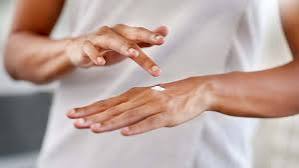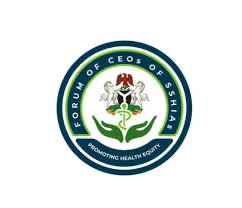The International League of Dermatological Societies (ILDS) has sounded a warning over the rampant misuse of topical corticosteroids in skin-bleaching products, a growing concern that experts say requires immediate global intervention.
In a statement released on Tuesday, ILDS President, Professor Henry Lim, underscored the pressing need for safer and more regulated use of topical corticosteroids. He emphasized the importance of increased patient awareness and stronger protective measures against the harmful effects of these potent skin-lightening agents.
Skin-bleaching has become a burgeoning industry worldwide, particularly in Africa, Asia, South America, and the Caribbean, where societal preferences for lighter skin continue to drive demand. Reports indicate that the global skin-bleaching market is projected to reach a staggering $15.5 billion by 2032.
Professor Lim expressed grave concern over the proliferation of unregulated bleaching creams, many of which contain high doses of corticosteroids. He noted that these products, often available over the counter without medical supervision, pose serious health risks to users.
The widespread use of super-potent corticosteroid-containing skin-lightening products is alarming. These creams and lotions, often applied indiscriminately, have been linked to irreversible skin damage, treatment-resistant fungal infections, systemic health complications, and severe mental health disorders.
Lim called for an urgent clampdown on the indiscriminate sale of corticosteroid-based skin-bleaching products. He advocated for stricter policies that prohibit the sale of these products as monotherapy or in fixed-dose combinations unless prescribed by qualified medical professionals.
Clearer guidelines are necessary to prevent the misuse and overuse of potent corticosteroids in skincare. Enhanced public education on the risks of skin-bleaching and stronger advocacy for safer dermatological alternatives are essential.
The ILDS, recognized as a leading global advocate for skin health, reaffirmed its commitment to promoting dermatological education, research, and clinical care to address these pressing concerns.
Adding to the chorus of warnings, Professor Ramesha Bhat, Head of Research at Father Muller Medical College in Mangalore, India, highlighted the dangerous misuse of corticosteroid-containing creams. He explained that many of these products are falsely marketed as antifungal treatments, further exacerbating skin conditions due to suppressed immune responses.
These combination creams provide temporary relief, but in the long run, they worsen skin conditions. Unregulated access, misleading advertisements, and societal beauty standards continue to fuel this crisis.
In South Africa, Dr. Ncoza Dlova, Head of Dermatology at the University of KwaZulu-Natal, described the skin-bleaching phenomenon as reaching epidemic levels. She expressed concern over the rising incidence of squamous cell carcinoma, a type of skin cancer increasingly linked to long-term bleaching product use.
The dermatology community must collaborate to combat this issue through education and advocacy while addressing the socio-political drivers of this harmful practice.
Medical professionals continue to stress the need for immediate intervention, including legislative reforms to curb the sale and use of harmful skin-bleaching products. The ILDS and other dermatological bodies are pushing for better consumer protection laws, mandatory warnings on product labels, and stronger enforcement of bans on dangerous skin-lightening agents.
With the industry projected to expand further, experts warn that without swift action, the health consequences of unregulated skin-bleaching will only worsen, posing a significant global public health challenge.







